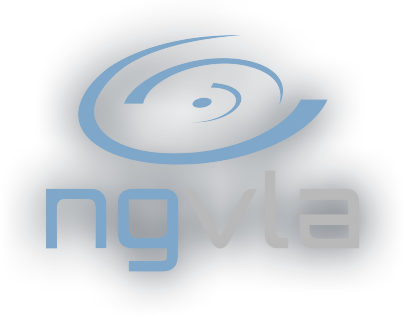Science with a Next-Generation Very Large Array
The ngVLA will have broad impact on many of the high priority goals of modern astronomy and astrophysics, including the science priorities described in the New Worlds, New Horizons Astro2010 Decadal Survey. The ngVLA Science Working Groups (SWGs) have identified a number of key science programs that push the requirements of the telescope through a community driven Science Use Case capture exercise led by the ngVLA Science Advisory Council (SAC). Community members are still encouraged to submit additional Science Use Cases and to coordinate a contribution to the ngVLA Science Book with the appropriate SWG chair.
If you are interested in joining one of the SWGs, please contact the corresponding Science Working Group Chair directly. An initial set of science goals suggested by the four SWGs are described in white papers published in the ngVLA Memo Series.
ngVLA Key Science Goals (KSGs)
KSG1: Unveiling the Formation of Solar System Analogs on Terrestrial Scales
KSG1: Unveiling the Formation of Solar System Analogs on Terrestrial Scales
The ngVLA will measure the planet initial mass function down to a mass of 5–10 Earth masses and unveil the formation of planetary systems similar to our own Solar System by probing the presence of planets on orbital radii as small as 0.5 AU at the distance of 140 pc. The ngVLA will also reveal circumplanetary disks and sub-structures in the distribution of mm-size dust particles created by close-in planets and will measure the orbital motion of these features on monthly timescales. KSG1 is part of the wider science applications that are discussed in Science Working Group 1 (SWG1).
KSG2: Probing the Initial Conditions for Planetary Systems and Life with Astrochemistry
The ngVLA will be able to detect predicted, as yet unobserved, complex prebiotic species that are the basis of our understanding of chemical evolution toward amino acids and other biogenic molecules. It will also allow us to detect and study chiral molecules, to include testing ideas on the origins of homochirality in biological systems. The detection of such complex organic molecules will provide initial chemical conditions data of forming solar systems and individual planets. KSG2 is part of the wider science applications that are discussed in Science Working Group 2 (SWG2).
KSG2: Probing the Initial Conditions for Planetary Systems and Life with Astrochemistry
KSG3: Charting the Assembly, Structure, and Evolution of Galaxies from the First Billion Years to the Present
KSG3: Charting the Assembly, Structure, and Evolution of Galaxies from the First Billion Years to the Present
The ngVLA will provide an order-of-magnitude improvement in depth and area for surveys of cold gas in galaxies back to early cosmic epochs, and it will enable routine sub-kiloparsec scale resolution imaging of the gas reservoirs. The ngVLA will provide a unique view into how galaxies accrete and expel gas and how this gas is transformed inside galaxies. It does so by imaging their extended atomic reservoirs and circum-galactic regions, and by surveying the physical and chemical properties of molecular gas over the entire local galaxy population. These studies will reveal the detailed physical conditions for galaxy assembly and evolution throughout the history of the universe. KSG3 is part of the wider science applications that are discussed in Science Working Group 3 (SWG3).
KSG4: Science at the Extremes: Pulsars as Laboratories for Fundamental Physics
Pulsars in the Galactic Center represent clocks moving in the space-time potential of a supermassive black hole. Imaging these via ngVLA would enable qualitatively new tests of theories of gravity. More generally, this would offer the opportunity to constrain the history of star formation, stellar dynamics, stellar evolution, and the magneto-ionic medium in the Galactic Center. The ngVLA combination of sensitivity and frequency range will enable it to probe much deeper into the likely Galactic Center pulsar population to address fundamental questions in relativity and stellar evolution. KSG4 is part of the wider science applications that are discussed in Science Working Group 4 (SWG4).
KSG4: Science at the Extremes: Pulsars as Laboratories for Fundamental Physics
KSG5: Understanding the Formation and Evolution of Stellar and Supermassive Black Holes in the Era of Multi-Messenger Astronomy
KSG5: Understanding the Formation and Evolution of Stellar and Supermassive Black Holes in the Era of Multi-Messenger Astronomy
The ngVLA will be the ultimate black hole hunting machine, surveying everything from the remnants of massive stars to the supermassive black holes that lurk in the centers of galaxies. High-resolution imaging abilities will separate low-luminosity black holes in our local Universe from background sources, thereby providing critical constraints on their formation and growth for all sizes and mergers of black hole–black hole binaries. The ngVLA will also identify the radio counterparts to transient sources discovered by gravitational wave, neutrino, and optical observatories. Its high-resolution, fast-mapping capabilities will make it the preferred instrument to pinpoint transients associated with violent phenomena such as supermassive black hole mergers and blast waves. KSG5 is part of the wider science applications that are discussed in Science Working Group 5 (SWG5).




